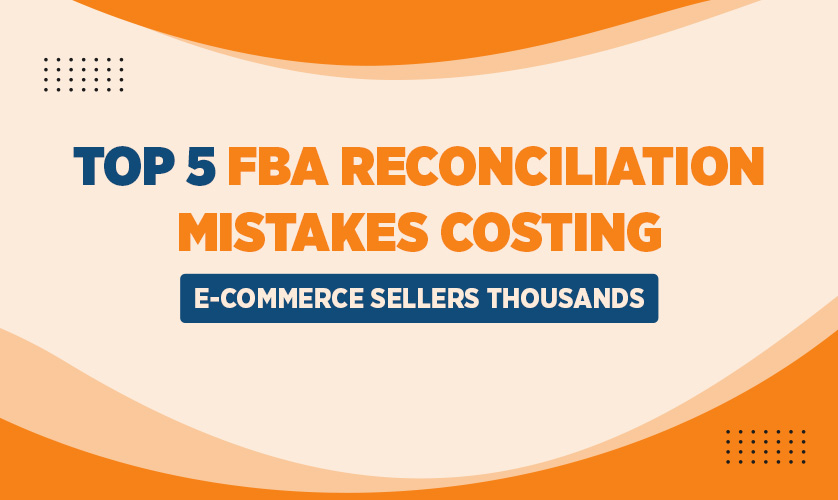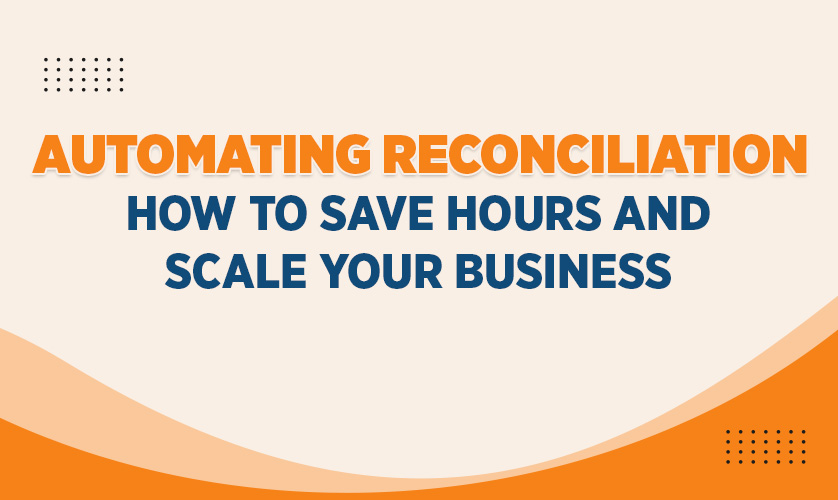Running an e-commerce business is exciting — until you realize how much money can quietly slip through the cracks. Whether you sell through Amazon FBA, Shopify, or other marketplaces, even small reconciliation errors can add up to thousands in lost revenue.
From FBA fees to supplier invoices, it’s crucial to keep your financial data accurate and consistent. Let’s break down the top 5 reconciliation mistakes e-commerce sellers make — and how to fix them before they impact your cash flow.
1. Ignoring FBA Account Reconciliation
FBA account reconciliation is one of the most overlooked financial processes. Many sellers assume Amazon’s reports are always accurate, but that’s not the case. Lost inventory, overcharged fees, and incorrect reimbursements are common issues.
👉 Example: A seller recently discovered Amazon failed to reimburse them for 85 lost units — a $2,000 mistake that went unnoticed for three months.
Pro Tip: Regularly perform a detailed FBA reconciliation to match your sales, returns, and reimbursements against Amazon’s reports. A dedicated FBA Reconciliation Service can automate this and ensure you recover every dollar owed.
2. Skipping Invoice Matching with Purchase Orders
When invoices aren’t properly matched with purchase orders and receipts, small discrepancies in unit cost or quantity can snowball into major financial gaps.
👉 Example: A supplier charged $0.50 extra per item on a bulk order. The mismatch wasn’t caught for two months, resulting in $1,200 in overpayments.
Pro Tip: Use reconciliation tools that automatically flag mismatches between invoices, POs, and received goods. Review these regularly to catch supplier billing errors early.
3. Overlooking Amazon Fee Adjustments
Amazon frequently updates fees for storage, shipping, and FBA services. These fee changes often go unnoticed and unaccounted for, creating silent profit drains.
👉 Example: Sellers who didn’t adjust for the new FBA storage rates in Q1 saw their margins drop by 4–6% overnight.
Pro Tip: Set up a monthly reconciliation of all Amazon fees and ensure they align with the latest published rates. Consider using an FBA Reconciliation Service to stay ahead of fee fluctuations.
4. Missing Refund and Return Discrepancies
Returns are a normal part of e-commerce, but failing to track them correctly can lead to missing refunds and inflated costs. Sometimes customers are refunded, but the returned item never makes it back into your inventory count.
👉 Example: One seller found 37 refunded items still missing from FBA inventory — a $900 hidden loss.
Pro Tip: Schedule weekly reconciliation of return and refund reports. Compare them against both your FBA inventory records and your payment statements.
5. Delaying Monthly Reconciliations
Many e-commerce sellers only reconcile quarterly — or worse, once a year. This delay makes it nearly impossible to catch errors in time for correction or reimbursement.
👉 Example: Amazon’s reimbursement window for lost inventory is 18 months. Waiting too long means permanently losing money that could have been recovered.
Pro Tip: Create a structured, monthly reconciliation checklist for all platforms — FBA, Shopify, PayPal, and bank accounts. Automating this through a professional FBA Reconciliation can save hours of manual work and eliminate guesswork.
Why Small Mismatches Matter
Even a small reconciliation gap — a few missing items or a misapplied fee — can compound over time. These errors distort your profit margins, cash flow projections, and tax filings. Accurate reconciliation not only protects your revenue but also gives you confidence in your business decisions.
The Smarter Solution: Outsource Your Reconciliation
If you’re spending more time fixing numbers than growing your business, it’s time to outsource. A professional FBA Reconciliation Service ensures your records are precise, your reimbursements are maximized, and your finances stay audit-ready — without the headache.
✅ Save hours of manual work
✅ Recover lost funds faster
✅ Get accurate, real-time financial reports




